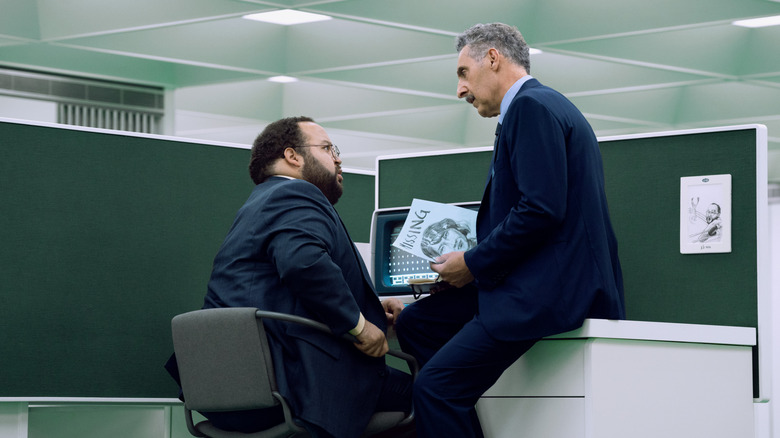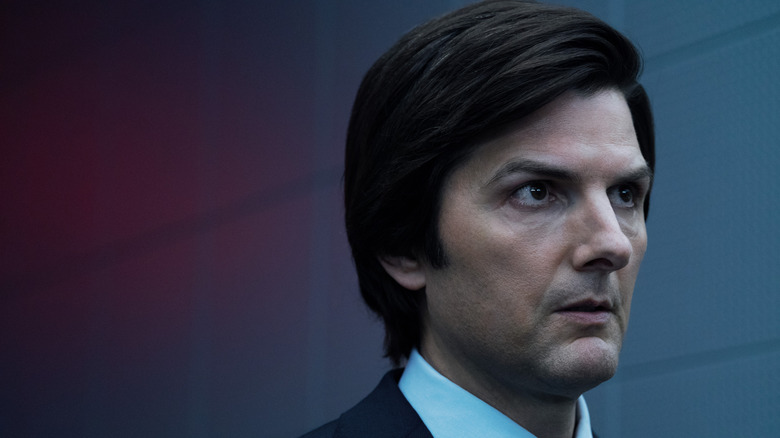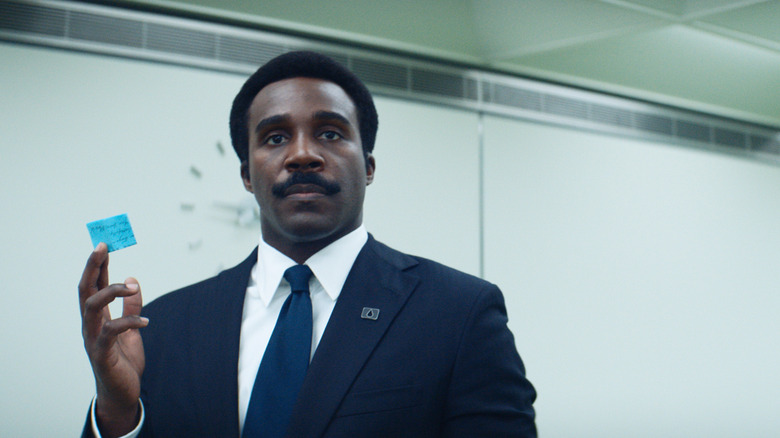Apple TV+
Warning: Spoilers for the second season of “Severance” are included in this article.
In the second season of “Severance,” the enigmatic Lumon Industries is further explored with the first episode providing intriguing hints about the vastness of the elusive corporation. The entirety of the season premiere happens within the confines of the office, leaving the audience in the dark about the ongoings outside Lumon but simultaneously sparking new questions.
Significant changes have been made within the company since the conclusion of the first season, half a year ago. Mark (portrayed by Adam Scott) finds his previous team at Macrodata Refinement (MDR) replaced by newcomers from other Lumon branches when he returns. This change gives us an idea of the company’s size and disparities between different branches. It’s revealed that certain Lumon branches have better funding than others, as the new employees discuss their former branches’ Perpetuity Wings. It’s also hinted that one of the new employees, Dario R. (played by Stefano Carannante), might have been stationed in Italy earlier, considering his native language.
In a later part of the episode, the original MDR team is shown an animation video by Mr. Milchik (Tramell Tillman) in a revamped break room. The video outlines the events that transpired in the first season and the reforms that followed. It’s disclosed in the video that Lumon has operations in 206 countries, indicating the corporation is larger than what viewers initially believed.
Lumon operates in over 200 countries

Apple TV+
The revelation that Lumon operates in 206 countries brings up more questions. Currently, only 195 countries are recognized by the United Nations. But this number increases on other lists, depending on which territories are acknowledged as sovereign states. For instance, the Olympics recognize 206 different committees worldwide, incorporating countries not recognized by the U.N., such as Kosovo and Taiwan.
So, Lumon could either be recognizing this broader perspective of independent states and operating in every feasible country globally, or the near-future world of “Severance” has undergone some political changes and border redrawing. In the same video, it’s reiterated that Lumon was founded in 1870. This implies a century and a half of global expansion, but we’re still unaware of what Lumon does exactly. It’s stated in the show that Lumon is a biotech company, which is somewhat apparent from the severance procedure and the implications of unnaturally long life in the Eagan family.
The phrasing used regarding the 206 countries is “from which Lumon operates”, which doesn’t necessarily mean that there are branches in all these countries, but it certainly implies that. The building where the show occurs is referred to as Branch 501. However, this doesn’t quite make sense. Why would a company need physical locations in hundreds of countries just for people to work in an office setting? The office depicted in the show is not crowded with employees, so it doesn’t appear to be a workforce issue either.
Lumon’s size helps explain its power

Apple TV+
Understanding Lumon’s international size provides an explanation as to why the protests against the severance procedure have been mostly ineffective. In the first season, we see a popular movement trying to legally ban severance. While a domestic company can certainly delay legislative action through prolonged lobbying, Lumon’s standing as a global biotech powerhouse would grant it infinitely more sway over not just the U.S. government, but governments worldwide.
Until we learn more about what Lumon does precisely, it’s challenging to speculate the exact value it could be offering to the world’s wealthy and influential. However, considering the company is effectively creating slave labor forces in every country globally, there’s enough scope to speculate why those in power might want Lumon to continue its operations.
The larger question is how much of the company’s cult-like religious mythology surrounding its founder, Kier Eagan, is revealed to the outside world. While international corporations can amass immense power and influence under global capitalism, Lumon’s entire culture is definitively odd, which you’d assume would make more people wary. We’ll have to wait for more before all the pieces (hopefully) start to fit together. That’s the nature of shows like “Severance”.
Lumon may be shrinking, not growing

Apple TV+
Another hint about Lumon’s size is that Mark W. mentions he was moved to the Kier branch after his own was shut down. This could simply be due to poor productivity – he does tell Mark S. that his MDR team never once met quota – but it could also suggest that the company is not faring well following its recent negative publicity.
While legislation banning the severance procedure clearly hasn’t come to fruition, Mr. Milchick indicates that the MDR team’s escape from the first season generated a lot of news. This might have been enough to trigger some shutdowns and consolidations, especially considering that different companies Lumon operates in would all have different regulations.
If Lumon is struggling, characters like Milchik could face more pressure to maintain control. We hope to uncover more secrets about Lumon’s true intentions soon.
Credit: www.slashfilm.com


